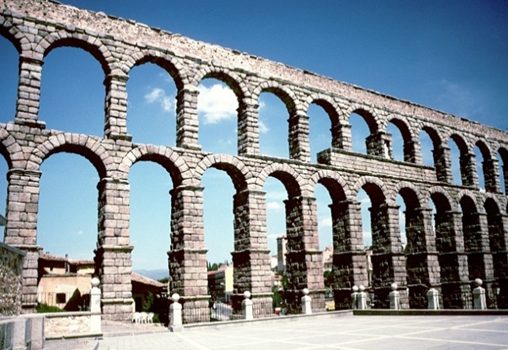Modelling of masonry structures
Approaches based on the Distinct Element Method
Cundall and Hart (1992) provide the following definition of the name ‘Discrete element’ which applies to a computer program only if: it allows large displacements and rotations between blocks, including complete detachment of the blocks, and it automatically detects new contacts as the calculations progress. The above features led to use of DEM for the analysis of masonry structures. the fundamental concept of DE models is to represent masonry as an assembly of component blocks, where the block model composed of sets of polygonal bodies. in this kind of model, the joints are viewed as the surfaces where contact between blocks takes place, governed by appropriate constitutive laws. the main idea is the idealization of masonry as a ‘discontinuum’ representing separately the mechanical behavior of the units and the interaction between them. implementing in this way the model appears with strongly non-linear behavior in the contacts, including phenomena of joint sliding and total separation which may involve large relative movements between the units with the consequent changes in structural geometry and connectivity. The simplest model of mechanical interaction between blocks is to assume that the blocks are connected by normal and shear elastic springs, i.e. interaction forces are proportional to the relative displacement between the two blocks. Since the beginning, the numerical technique was equipped with the ability to simulate the static and dynamic behavior of interacting bodies undergoing arbitrary motions (with artificial viscous damping)
This modeling technique is adopted in
the commercial software UDEC (used by Roma Tre University) where a model consists of blocks assumed as 2D rigid elements and joints considered as 1D interfaces in which a non-linear constitutive behaviour is defined, for example, with the Mohr-Coulomb failure criterion. In a first step, the macro- elements that are expected to exhibit collapse mechanisms are selected. For each macro- element, the morphology of the masonry texture and the reproduction of the effective shape and arrangement of the stones within the wall is carried out. For this purpose, starting from a CAD reproduction of the masonry texture, a pre-processing code is developed to automatically generate the mesh. Once the geometry is obtained, the mechanical properties of the joints and blocks are defined taking into account the effective depth of the macro-element. Only a few constitutive parameters are requested to define the non-linear behaviour of the joints: the friction angle, normal and tangential stiffness, while the joint cohesion and tensile strength are neglected.
The non-linear static analysis is carried out by applying gravity first and then horizontal increasing acceleration in successive steps. At the end of each step the equilibrium configuration is reached by explicit integration of the equation of motion. Static solutions are obtained using artificial damping to reach the equilibrium state as soon as possible. Once the last equilibrium path is reached under increasing horizontal acceleration, a further load step activates the collapse mechanism, which can be followed up to the attainment of the ultimate displacement and then to failure.
The non-linear dynamic analysis is also carried out, firstly, by applying gravity load and then horizontal time history input, applied to the base (foundation) of the model. The time history is represented by velocity excitation signal, created artificially or recorded during real earthquakes. The Rayleigh damping could be employed, including both the mass- and stiffness proportional components, in order to obtain a critical damping. During the dynamic simulation, the typical time step of the runs is about 10-6 sec, to meet the requirements of numerical stability of the explicit algorithm.
The main research activities, currently under investigation by the structural team of Roma Tre University, are Out-of-Plane behaviour of historical masonry walls; Advances procedure for Push-Over analyses; and Non-linear dynamic analyses of blocks monumental structures. The UDEC software, based on the Distinct Element Modelling (DEM) approach, is used to perform advanced numerical simulations.
